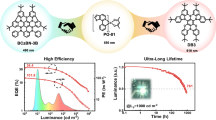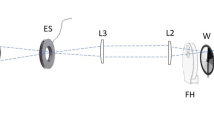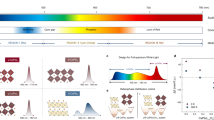Abstract
IF any light whatever has its intensity increased the effect on the eye is to add to the sensation a certain yellow element which I have accurately defined by experiment (Am. Jour. Sci., April, 1877, vol. xiii. p. 247). A red light brightened becomes yellower, a green light yellower, a yellowish white less white, a blue or violet light whiter. The phenomena are described at length in Prof. Rood's “Modern Chromatics.” The fact that an incandescent body becomes less red and more yellow when it is heated is probably due to this physiological principle. That the incandescent body ultimately becomes white is probably owing to some not understood modification of the principle for excessively bright lights.
This is a preview of subscription content, access via your institution
Access options
Subscribe to this journal
Receive 51 print issues and online access
$199.00 per year
only $3.90 per issue
Buy this article
- Purchase on SpringerLink
- Instant access to full article PDF
Prices may be subject to local taxes which are calculated during checkout
Similar content being viewed by others
Author information
Authors and Affiliations
Rights and permissions
About this article
Cite this article
PEIRCE, C. On the Colours of Double Stars. Nature 22, 291–292 (1880). https://doi.org/10.1038/022291c0
Issue date:
DOI: https://doi.org/10.1038/022291c0



